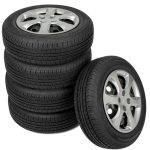It's Easier Here.
Leith Cars Blog

Which configuration is the best: front, mid or rear engines? As usual, things aren’t so clear-cut. Each configuration has characteristics that make it good for some applications, but bad for others, so let’s break it all down.
Rear-Engines
Unless you’re on the racetrack, rear engine vehicles are kind of hard to come by. Reason being, these engine applications have a higher learning curve than other configurations.
But for race cars under the control of a professional driver, rear engines are great. They provide a lot of power and traction to the back wheels, which makes them quick to accelerate. Although, that same power to the back wheels can come back to bite them.
They are prone to oversteer – since the power and weight in the back wants to swing around to the front – but with the right suspension and chassis tuning, rear engine vehicles can be incredible sports cars. Just take a look at the Porsche 911.

Mid-Engines
Mid-engine is a funny term, because these engines are usually located in what we’d call the rear-mid position. Either way, many people will tell you that mid-engine cars are the best for handling, and for the most part they’re right.
By placing the engine in the middle of the car, engineers balance the front and rear weight and are able to maintain equal traction in all four wheels. This makes them incredibly stable in the corners.
There are a few drawbacks to a mid-engine vehicle, though. The first being the lack of cabin space. Typically, that mid-engine is located where one might want a back seat. Second, if you ever lose control of a mid-engine vehicle and start to spin, it will be harder to overcome and stop the spin due to its low center of gravity. Think of it like the difference between throwing a baseball and a baseball bat. The baseball’s center of gravity is compacted to the center, while a baseball bat’s is unbalanced, and spread out.

Front-Engines
We’d be willing to bet that 98% of vehicles on the road are front-engine. Why? For starters, most vehicles are front-wheel drive (FWD), so it makes sense to have the engine over the wheels that need traction. This makes the vehicle much more stable, and also helps maintain a relatively balanced weight distribution when accelerating. However, front-engine FWD cars are prone to understeer, because they lose traction when accelerating due to the car’s weight shifting to the rear wheels. This makes them somewhat undesirable for racing applications.
Rear-wheel drive (RWD) front engine cars are balanced better, though. Their weight is more evenly distributed, making them less prone to oversteer as compared to RWD rear-engine cars, and less prone to understeer as compared to FWD front-engine vehicles. The low center of gravity in a mid-engine vehicle still beats them out, though.

So which is the best?
Front-engine cars are generally the best for consumers. Rear-engine cars are unmatched in acceleration but can be hard to handle at times. And mid-engine cars are incredibly stable, but also have their fair share of drawbacks. So, all we can say is that they’re all the best in their own way. How’s that for a positive attitude?
Here’s a video update to our blog, “Front vs Mid vs Rear Engines – Which Is Best?”
Be sure to share this post with your friends, or on your Facebook if you enjoyed it! We always love to hear your feedback, so feel free to leave us a comment below. Thanks for reading!
More from my site








